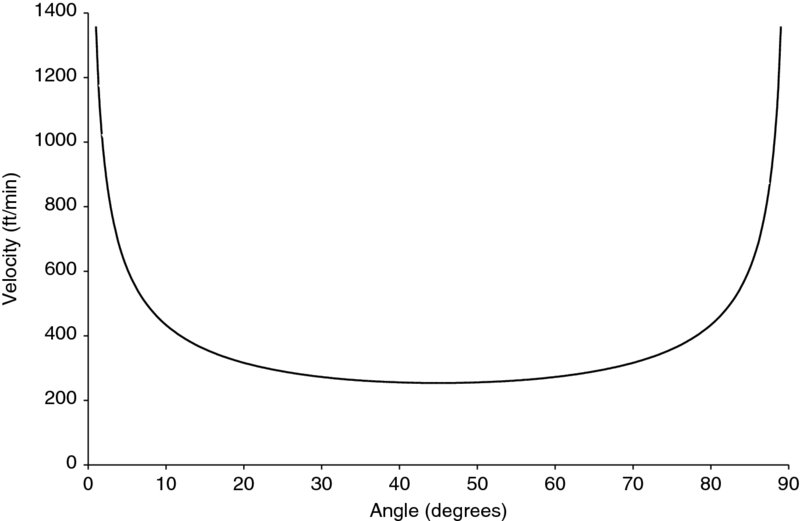7 Optimization and sensitivity
Models for the nominal performance and variation can be used to optimize designs for robustness. When the number of inputs exceeds the number of outputs, multiple solutions exist, and the design engineer has the ability to create a design that minimizes the sensitivity of the outputs to variability of the inputs.
For example, if the design problem is to determine the angle and velocity required to make a projectile travels 2000 feet in a vacuum, then any point on the line shown in Figure 7.1 provides a solution. The goal is to choose the solution that yields minimum variation in the distance the projectile travels. The models introduced in Chapter 5 can be used with optimization routines to achieve the target output while minimizing the variance of the output.

Figure 7.1 Solutions for firing a projectile 2000 feet.
7.1 Optimization procedure
The following procedure is recommended for optimizing a design for robustness.
- Model nominal output corrected for statistical bias using the first two terms of the Taylor series approximation.
- Model output variation using the first term of the Taylor series approximation.
- If there are fixed output specifications, use an optimization algorithm to minimize the output standard deviation while achieving the desired nominal output.
- If there are fixed output specifications, select the appropriate statistical ...
Get Probabilistic Design for Optimization and Robustness for Engineers now with the O’Reilly learning platform.
O’Reilly members experience books, live events, courses curated by job role, and more from O’Reilly and nearly 200 top publishers.

